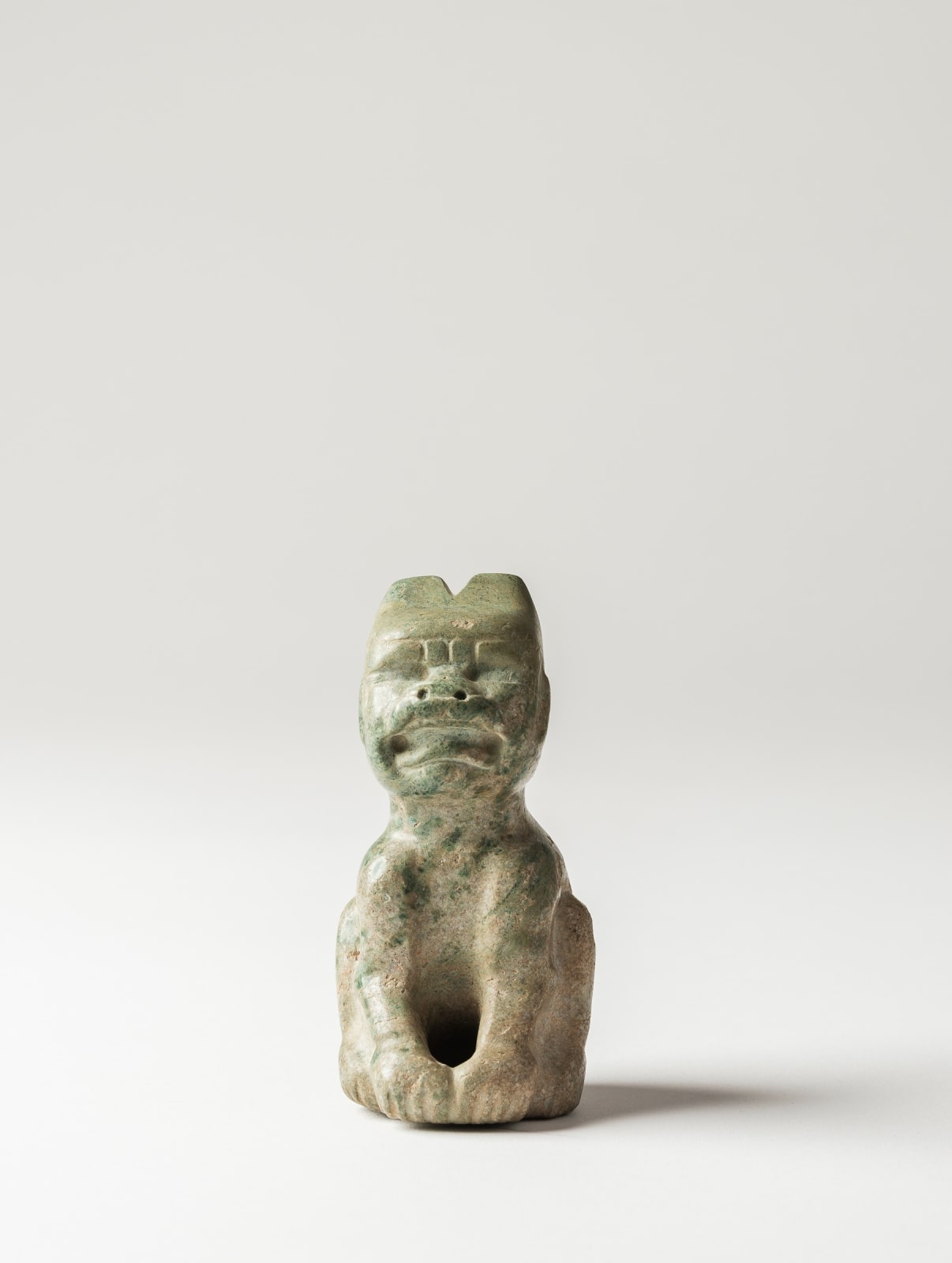Olmec Culture Mexico, Circa. 1200 BC-Circa. 400 BC
It sits as if carved from a single breath held for a thousand years.
The stone is not green, not exactly—rather, it is the color of deep forest shadows at noon, of wet leaves clinging to a riverbank after the storm has passed. Smooth and cold, like the back of a lizard resting on a flat rock, it carries within it the secret veins of jade and earth, flickering just beneath the surface like dreams beneath closed eyelids.
Its head is squared, monumental, with a furrow that splits the crown like a forgotten riverbed. The eyes are carved shut, but not empty—behind those lids something watches inwardly, folded within its own eternity. The snout pushes forward, heavy and certain, with nostrils like twin seeds pressed into flesh. A mouth both cruel and mournful curves downward in a silent grimace, as though bearing the weight of invisible speech.
The body leans forward, tense yet still, like a breath paused mid-exhale. The front legs are thick, ending in paws that do not rest so much as root into the world beneath them. There is no decoration, no vanity, only the fullness of presence—this is a creature made not to please, but to remain.
It occupies space the way a storm cloud occupies the sky: dense with what might happen. There is no movement in it, yet all the movement of the world seems to echo around its stillness. It is not seated. It is poised.
Not animal.
Not god.
Not stone.
But all three at once, waiting.
Join our mailing list
* denotes required fields
We will process the personal data you have supplied in accordance with our privacy policy (available on request). You can unsubscribe or change your preferences at any time by clicking the link in our emails.
